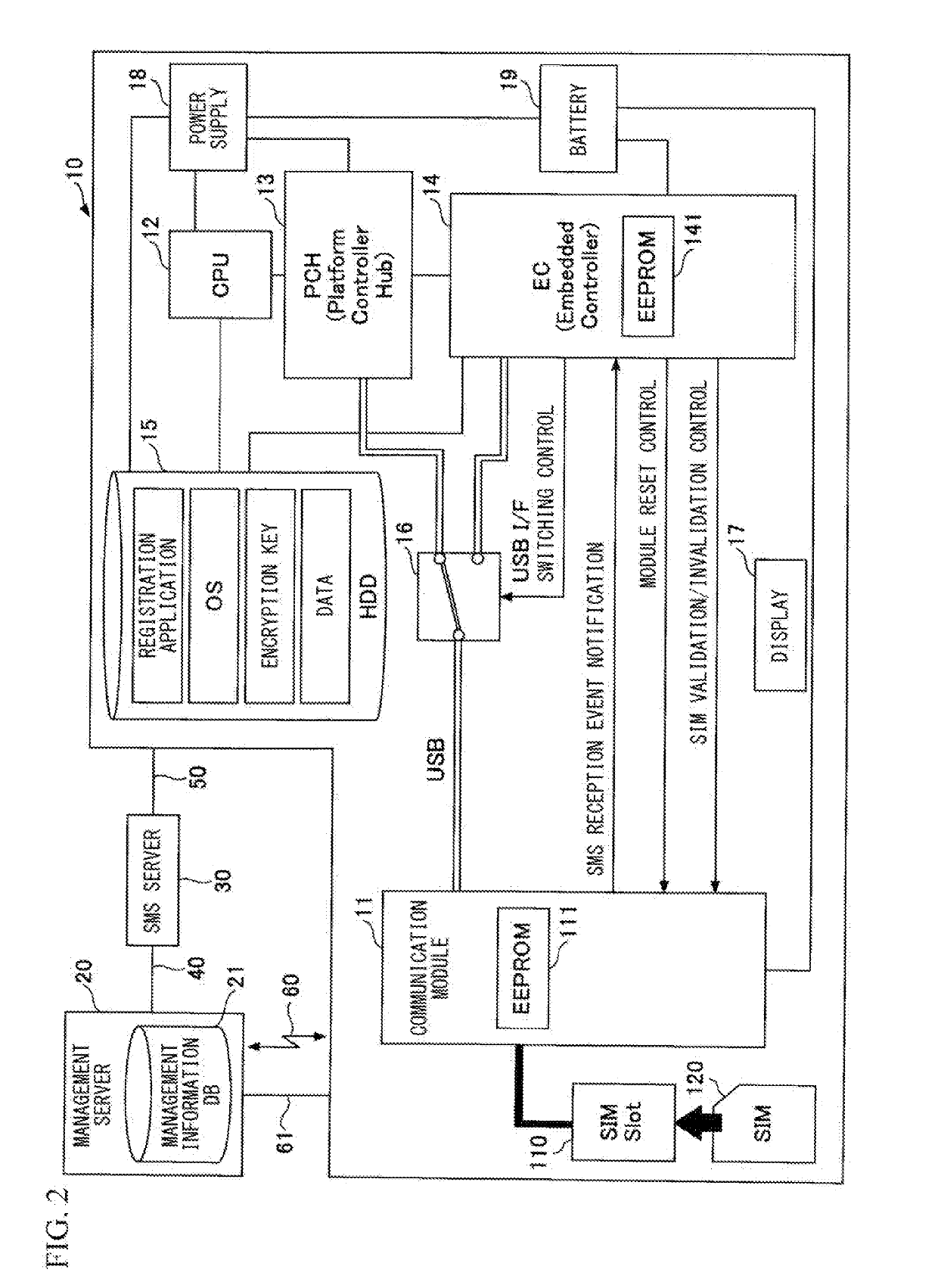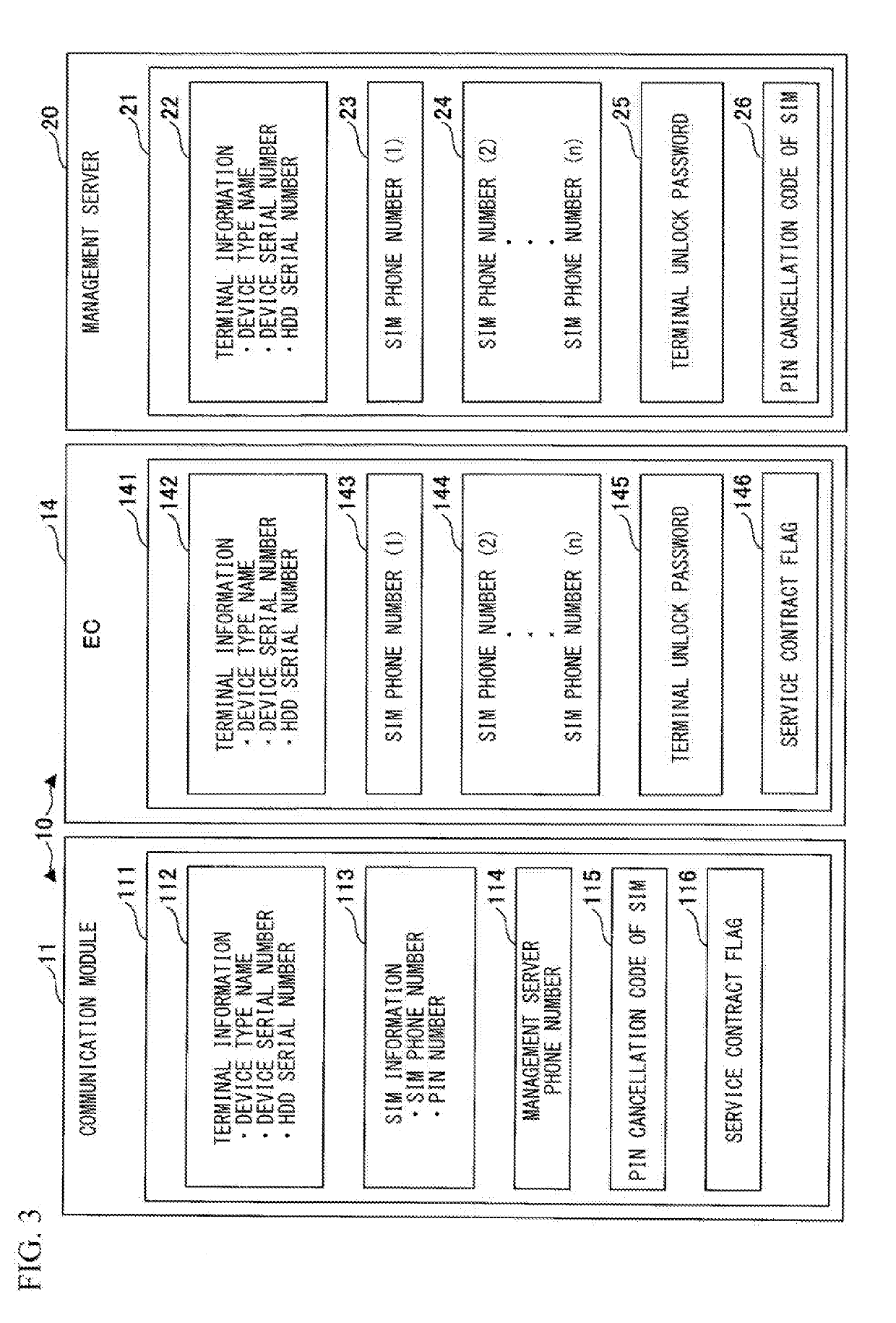Terminal device, registration-processing method, and non-transitory computer-readable recording medium storing program
- Summary
- Abstract
- Description
- Claims
- Application Information
AI Technical Summary
Benefits of technology
Problems solved by technology
Method used
Image
Examples
second embodiment
Operation of Second Embodiment when Unregistered SIM is Inserted at Time of Service Validation
[0089]Next, the operation of the terminal device 10 according to the second embodiment will be described with reference to FIG. 7. In the second embodiment, when a SIM card unregistered at the time of service validation has been inserted into the terminal device 10, the following registration process is executed by the EC 14 without involving the management server 20. As a premise, at the start of execution of the present process, the service contract flag 146 is set to anon state and the remote data erasure service is in a valid state. Also, the step of performing the same process as the registration process according to the first embodiment of FIG. 6 is denoted by the same step reference sign and description thereof will be simplified.
[0090]First, the reception unit 61 recognizes the SIM card 120 inserted into the SIM slot 110 (step S10). Next, the determination unit 62 determines whether...
PUM
 Login to View More
Login to View More Abstract
Description
Claims
Application Information
 Login to View More
Login to View More - R&D
- Intellectual Property
- Life Sciences
- Materials
- Tech Scout
- Unparalleled Data Quality
- Higher Quality Content
- 60% Fewer Hallucinations
Browse by: Latest US Patents, China's latest patents, Technical Efficacy Thesaurus, Application Domain, Technology Topic, Popular Technical Reports.
© 2025 PatSnap. All rights reserved.Legal|Privacy policy|Modern Slavery Act Transparency Statement|Sitemap|About US| Contact US: help@patsnap.com



